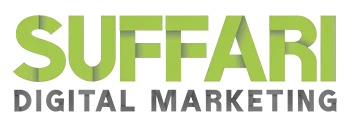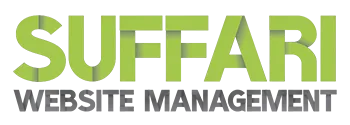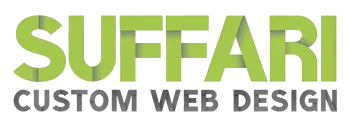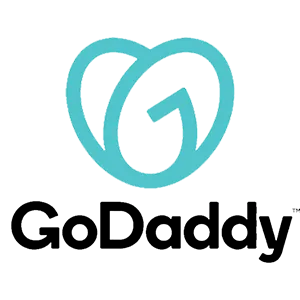
What is a canonical tag? - Suffari
In the world of website development and search engine optimization, canonical tags are a powerful tool in ensuring your website's pages are properly indexed and ranked. But what exactly is a canonical tag, and why is it important? This article will dive into the purpose, syntax, and common mistakes related to canonical tags, as well as when and how to use them effectively. Ready to optimize your website's search engine performance? Let's explore canonical tags and how they can improve your SEO strategy.
Table of Contents
What is the purpose of a canonical tag?
Prevents Duplicate Content Issues
The importance of Canonicals in Ecommerce
What is a "canonical" tag?
A canonical tag, also known as a "rel=canonical" tag, is a snippet of HTML code that serves to identify the preferred or main version of a web page among a set of duplicate or similar pages. Imaging if the president of the United States had a twin brother (or sister). Wouldn't it be great if the twin wore a t-shirt that said "He's the president, not me." That's what a canonical tag does for webpages.
What is the purpose of a canonical tag?
When it comes to managing a website and ensuring that its web pages are properly indexed by search engines, the use of a canonical tag is a crucial tool for any webmaster. The tag, designated by the "rel=canonical" attribute, provides a clear signal to search engines, such as Google, about the preferred version of a particular webpage, thus aiding in the proper indexing of the page. In essence, the main purpose of a canonical tag is to address issues related to duplicate content and similar URLs, and to guide search engines to the primary version of a page, as specified by the website owner or webmaster.
Defining the canonical version of a webpage is an essential step in the overall search engine optimization (SEO) strategy for a website. By using the canonical tag, website owners can specify the main version of a webpage, thereby consolidating the ranking signals for the specified page. This, in turn, helps to prevent issues related to the indexing and ranking of multiple versions of the same content. For example, if a website has two URLs with highly similar content, the use of a canonical tag can indicate to search engines which of the two pages is the preferred version for indexing and displaying in search results. This is particularly important for large e-commerce sites, news websites, and any platform with a significant amount of content that may exist in multiple locations within the site's URL structure.
The correct implementation of canonical tags can also have a positive impact on a website's user experience. By guiding search engines to the main version of a page, website owners can ensure that online users are directed to the most relevant and authoritative source of the content they are searching for, thus enhancing the overall usability and quality of the website. In addition to this, the use of canonical tags can also help to preserve the link equity of a website by consolidating the ranking signals of duplicate or similar pages.
Prevents Duplicate Content Issues
One of the primary functions of a canonical tag is to address and prevent the potential issues that may arise from the existence of duplicate or highly similar content on the internet. Duplicate content can create a range of problems for website owners, particularly in terms of how search engines index and display the content in their search results. When search engines encounter multiple versions of the same content on different URLs, they may struggle to determine which version to include in their index or consider as the main version for ranking purposes. This can result in the dilution of ranking signals and the potential loss of visibility for the affected webpages. The use of canonical tags can indicate to search engines which of the two pages is the preferred version for indexing and displaying in search results. This is particularly important for large e-commerce sites, news websites, and any platform with a significant amount of content that may exist in multiple locations within the site's URL structure.
By using canonical tags, website owners can proactively manage and resolve these challenges by specifying the preferred version of a webpage. This, in turn, helps to consolidate the indexing properties of the specified page, guiding search engines to focus on the canonical URL and reducing the likelihood of non-canonical (duplicate or similar) pages appearing in search results. In doing so, the use of canonical tags becomes an effective strategy for website owners to control how their content is presented in search engine results and to mitigate any potential impact that duplicate content may have on their SEO efforts.
Furthermore, the correct implementation of canonical tags can also have a positive impact on a website's user experience. By guiding search engines to the main version of a page, website owners can ensure that online users are directed to the most relevant and authoritative source of the content they are searching for, thus enhancing the overall usability and quality of the website. In addition to this, the use of canonical tags can also help to preserve the link equity of a website by consolidating the ranking signals of duplicate or similar pages, which can have a direct impact on the site's search engine rankings and visibility.
When to Use Canonicals
The decision of when to use a canonical tag is an important consideration for website owners, particularly in situations where multiple versions of a page exist or where similar content is accessible through different URLs. In general, the use of a canonical tag is recommended on all pages, even if that means the canonical is the same URL as that page. That's the best practice. Every page should have a canonical URL set. However, they are especially important in the following scenarios:
When a website has various URLs that lead to the same content.
When a webpage has been created in multiple language versions.
When sorting and filtering options generate different variations of the same content.
When you have more than 1 page with the same or very similar content. For example, if you've duplicated a landing page specifically to track traffic from a specific marketing campaign.
In each of these cases, the implementation of a canonical tag allows website owners to specify the preferred version of the page, ensuring that search engines index and display the specified version while also consolidating the ranking signals associated with the content.
The importance of Canonicals in Ecommerce
For e-commerce websites, in particular, the use of canonical tags is crucial in addressing the potential for duplicate content issues that may arise from the presence of product pages with similar or identical content but accessible through different URLs. By using canonical tags, online retailers can guide search engines to index the primary product page while also managing the indexing of product variations, such as different sizes or colors, thus avoiding potential SEO issues related to the display of multiple similar product pages in search results. Similarly, for websites with multilingual content, the implementation of hreflang and canonical tags in conjunction can help to ensure that the correct language and regional versions of a page are served to users and properly indexed by search engines.
Proper Canonical Tag Syntax
The syntax for implementing a canonical tag is relatively straightforward and follows a specific format within the HTML of a webpage. When adding a canonical tag to a webpage, it is included in the <head> section of the HTML, which is the part of the code that contains important page elements such as the title, meta descriptions, and other essential information. The basic structure of a canonical tag consists of the "<link>" element, with the "rel" attribute set to "canonical" to indicate the type of link, and the "href" attribute specifying the canonical URL of the webpage. An example of a canonical tag's syntax is as follows: <link rel="canonical" href="https://suffari.com" />. In this example, the "href" attribute contains the absolute URL of the preferred version of the webpage, while the "rel" attribute identifies the link as the canonical tag.
It's important to note that when implementing the syntax for a canonical tag, the "href" attribute should always contain the complete, absolute URL of the canonical version of the webpage, including the necessary protocol (e.g., "https://") and the full domain and path to the specific page. This ensures that the canonical tag is accurately interpreted by search engines, leaving no room for ambiguity regarding the preferred version of the page. Additionally, website owners and webmasters should also verify that the canonical tag is placed within the <head> section of the HTML, as this is the standard and recommended location for important page directives and elements that are used by search engines to understand the content and its properties.
Properly setting the tag within html
Setting the canonical tag properly within the HTML of a web page is a critical aspect of its implementation and effectiveness in guiding search engine crawlers to the preferred version of the page. To ensure that the canonical tag is set up correctly, website owners and webmasters should follow a set of best practices that help to avoid potential errors and misinterpretations by search engines. When setting the canonical tag, it's essential to verify that the specified canonical URL is the definitive, preferred version of the page and that it represents the most appropriate source for search engines to index and display in their search results.
Website owners should also double-check that the canonical tag is self-referential, meaning that a page's canonical tag should point to the URL of the page itself, rather than to another page. This self-referential structure helps to reinforce the clarity and consistency of the canonical signal, reducing the likelihood of confusion or misinterpretation by search engine algorithms. In addition, when using canonical tags in conjunction with other page directives, such as hreflang annotations or meta tags, it's important to ensure that these elements are properly coordinated to convey the correct signals to search engines and to avoid conflicting indications about the preferred version of the page.
Another crucial aspect of setting the canonical tag properly is to regularly monitor and update your website canonicalization directives as needed, particularly in dynamic website environments where content may change or new pages may be added. By staying vigilant and proactively managing the canonical tags across a website, webmasters can help to maintain the integrity of their site's indexing and ensure that search engines consistently recognize and prioritize the preferred versions of their webpages, thus maximizing the SEO value and visibility of their online content.
Canonicals vs. 301 Redirects
When considering the use of canonical tags, it's important to understand how they differ from another common method of managing duplicate content and specifying preferred URLs: the 301 redirect. While both canonical tags and 301 redirects serve the purpose of guiding search engines to the primary version of a page, they do so through different means and are suited for different scenarios. A canonical tag is a set of directives included within the HTML of a webpage, providing a signal to search engines about the preferred version of the page among a set of duplicates or similar pages. In contrast, a 301 redirect is a server-side redirect status code that permanently leads both users and search engines from one URL to another.
The choice between using a canonical tag and a 301 redirect depends on the specific context and requirements of the website. Generally, a canonical tag is preferred when the existence of multiple versions of a page is intentional and serves a legitimate purpose, such as when dealing with printer-friendly versions of pages, e-commerce product variations, or similar content available in different languages. On the other hand, a 301 redirect is the more suitable option when a web page has been permanently moved to a new location, or when there is a clear, primary URL to which all traffic and indexing properties should be transferred, such as in the case of website restructuring or the consolidation of multiple webpages into a single, definitive version.
It's important for website owners and webmasters to carefully assess the specific circumstances and requirements of their webpages when determining whether to use a canonical tag or a 301 redirect to address duplicate content or specify preferred URLs. By understanding the distinctions and optimal uses of these two methods, website professionals can make informed decisions about the most appropriate approach to take in each situation, ultimately contributing to the efficient management of their website's indexing and the enhancement of its overall SEO performance.
Common Mistakes
While the use of canonical tags is a powerful and valuable strategy for managing duplicate content and guiding search engines to the preferred version of a webpage, there are several common mistakes and missteps that website owners should be mindful of to ensure the effective implementation and utilization of canonical tags. One frequent error is the misuse or misplacement of canonical tags within a website, such as including them in the website's main navigation, within the body of the content, or on non-HTML files. This can lead to the misinterpretation of canonical signals by search engines and result in the mishandling of the specified directives, potentially impacting the indexing and display of the affected webpages in search results.
Another common mistake is the use of self-referential canonical tags that point to non-canonical URLs or that are implemented inconsistently across a website's pages. When a canonical tag fails to accurately point to the preferred version of a page, it diminishes the effectiveness of the tag and can create confusion for search engine crawlers in understanding which version of the page to prioritize for indexing. Additionally, website owners should be cautious of using canonical tags as a substitute for addressing underlying issues of duplicate content, such as through the improper handling of URL parameters, the misuse of meta robots tags, or the failure to implement appropriate 301 redirects in cases of page relocation or site restructuring.
It is also a mistake to neglect the regular monitoring and maintenance of canonical tags on a website, particularly in dynamic website environments where content may change, new pages may be added, or site updates and optimizations may occur. Failing to review and update canonical tags as needed can lead to outdated or conflicting directives being followed by search engines, potentially resulting in the mishandling of a website's indexing and the display of its webpages in search results. To avoid these common mistakes, website owners should adhere to best practices for the proper placement, consistency, and accuracy of canonical tags, and should conduct periodic reviews and audits of their website's canonicalization directives to ensure their ongoing effectiveness in guiding search engine traffic to the preferred versions of their webpages.
Testing and Troubleshooting
As with any integral aspect of website management and SEO, testing and troubleshooting the implementation of canonical tags is a fundamental practice for website owners and webmasters to ensure the accurate and effective handling of duplicate content and the proper indexing of web pages by search engines. When implementing canonical tags across a website, it is advisable to use the various tools and features offered within search console platforms, such as Google Search Console, to verify the correct setup and interpretation of the canonicalization directives by search engines. These platforms provide specific reports and functionalities that allow website professionals to identify and resolve issues related to the implementation, handling, and detection of canonical tags on their site.
In addition to utilizing search console platforms, website owners can also employ site audit tools and services that are designed to detect and report on canonicalization issues, as part of a comprehensive approach to testing and troubleshooting the implementation of canonical tags. These tools can help to identify instances of non-canonical pages, the misapplication of canonical tags, and other related issues that may impact a website's indexing and SEO performance. By regularly conducting site audits and leveraging the diagnostic capabilities of these tools, website professionals can proactively address any canonicalization issues, refine their implementation of canonical tags, and optimize the handling of duplicate content across their website to align with best practices and the preferences of search engines.
Conclusion
In conclusion, a canonical tag is a crucial tool for optimizing web pages and avoiding duplicate content issues. By designating the main version of a webpage, it helps search engines properly index the content and prevent the indexing of low-quality or duplicate pages. It is important to use the correct syntax and set the tag properly in order to reap its benefits. While it may seem similar to a 301 redirect, a canonical tag serves a different purpose and should be used in specific situations. Common mistakes and troubleshooting tips should also be kept in mind when implementing this tag. Overall, understanding and properly utilizing canonical tags can greatly improve the SEO of a website and ultimately lead to better search engine rankings. Remember to consult with an SEO expert or conduct proper testing if facing any difficulties with implementing canonical tags.























Youtube